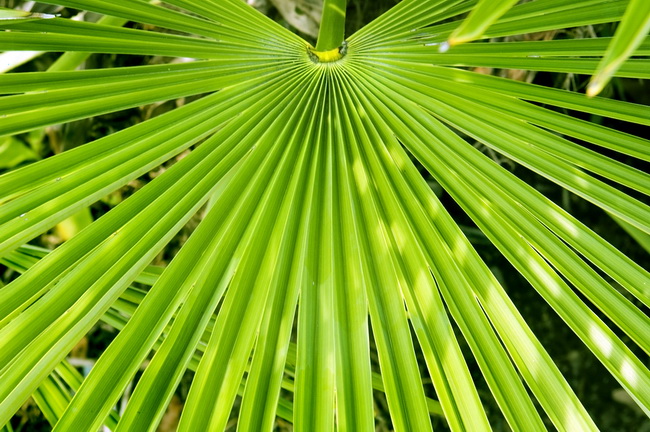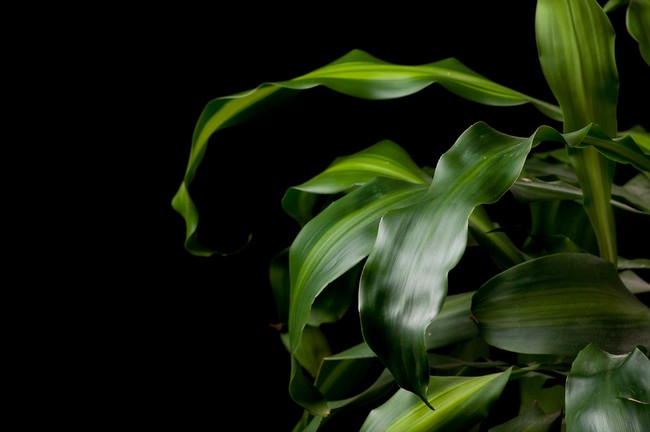- Make It Yourself Lavender Heart-Shaped Bath Bombs!
- 20 Things You Never Knew About “Down There”
- 12 Best Foods For Those Suffering From Arthritis Pain
- 12 Personal Hygiene Mistakes Almost Everyone Makes (Mom Never Told You About #4!)
- 15 Medicinal Plants And Herbs From The Cherokee People
- 12 Mind-Blowing Benefits Of Drinking Coconut Water During Pregnancy
- 12 Outstanding Winter Foods That Won’t Fatten You Up Like A Christmas Turkey
Top 15 Houseplants That Clean The Air And Relieve Stress

Photo credit: bigstock.com
Are you interested in cleaning the air in your home? Giving it a brighter, more relaxing ambience? Then look no further than house plants. Even if you have a “black thumb,” there are certain plants that need very little care, and even some that need almost no light, so no matter how dark your room might be, there is a plant that will work well for you.
Plants not only bring a bit of nature into your home, but did you know that they can reduce stress and relieve tension? Dutch researchers performed a study in 2008 and found that hospital patients who had plants in their rooms had lower levels of stress than patients who had none.
Let’s not forget that winter is almost upon us. This means, for most of us, piles of ice and snow with bitter winds that drive all but the hardiest indoors. Our well-sealed, energy-efficient homes have a wide variety of toxic chemicals. Almost all of our modern day furniture contains a volatile, organic compound called formaldehyde, which is constantly being emitted in low levels. Formaldehyde is a known human carcinogen and can trigger asthma attacks and even allergic reactions in some people. Formaldehyde is in the pressed wood (sometimes called particle board) of furniture and kitchen cabinets. It is found in carpet glue, emitted from natural gas stoves, a part of paint, flooring glue, caulk, furniture finishes, and those water and stain resistant coverings that are applied today to almost all types of upholstery, curtains, carpets, rugs, and clothing.
Back in 1989, NASA scientists tested a wide variety of common houseplants for their ability to remove formaldehyde from the air. We are including those plants and some other plants that have super air cleaning power. Mix and match what suits you.
Put one houseplant in every room, and you should notice a difference in the way your house smells and feels in a matter of days.
Continue to Page 2

Photo credit: bigstock.com
1. Palms
There are numerous types of palms, all of which are excellent at removing indoor air pollution, especially formaldehyde. Palms are also very easy to care for. The best palm for removing formaldehyde is the Dwarf Date Palm, which looks very much like a miniature version of the palms you see in places like Los Angeles or Hawaii. You can also get clean air, however, from other types of palms such as lady palms, parlor palms, areca palms, and bamboo palms. All of these types of palms like cooler temperatures (between 60 and 75), so they are perfect for most households.
2. Gerbera Daisy
These bright, colorful flowers remove benzene from the air and also absorb carbon dioxide during the day, but release oxygen at night, which makes these beautiful flowering plants perfect for bedrooms.
3. Boston Fern
These are the standard when it comes to indoor house plants. They are beautiful, fairly easy to care for, and remove more formaldehyde than any other house plant. Boston ferns also remove other types of indoor air pollution including xylene and benzene. Boston ferns need a bit more care than some other plants, however. During the winter months, you may need to mist their leaves with water daily if humidity levels are low. They also need weekly feedings of fertilizer in the warmer months. If you love ferns but Boston ferns sound like a bit more work than you want to invest, try Kimberley Queen Ferns. This is a larger, more broad leafed fern but much easier to care for, especially if you have very dry indoor air.
4. English Ivy
When allowed to grow outdoors, English ivy can be an invasive species of vine that will tear off rain gutters and damage your home’s exterior. However, when controlled in a pot and brought indoors, English ivy becomes a pretty little formaldehyde remover. English ivy enjoys partial sun, so it’s good for growing near windows. You can put it in a pot with a small trellis or allow it to climb around a window if you like. Mist it occasionally during the dry winter months, and it will thrive.
5. Rubber Plants
If you have a dimly lit room or an office that is screaming for a little bit of nature and some cleaner air, you simply cannot go wrong with a rubber plant. Rubber plants are slow-growing beauties that need very little light and are super formaldehyde removers.
Continue to Page 3

Photo credit: bigstock.com
6. Peace Lily
These are truly unique houseplants and one of the few that will bloom indoors. You have probably seen these plants with their slender leaves and seashell-shaped white flowers in most doctor and dentist offices. These bring a light touch of summer into a room and are one of the best plants for removing benzene and formaldehyde. This plant loves low light conditions and actually humidifies the air. Please note that the leaves and flowers are poisonous to both humans and pets, so this might not be the best choice for those with small children or pets that like to chew.
7. Red-Edged Dracaena
This vibrant, beautiful plant can grow to be 15 feet tall, so if you have higher ceilings, this is a terrific plant for filling up space, as well as for decorating. Better still, this beauty removes toxins from the air including formaldehyde, trichloroethylene, and xylene. Dracaenas love sunlight, however, so put them in a sunny room or near a sun-filled window.
8. Philodendron
Philodendrons, with their heart-shaped leaves, are very popular plants, even if they tend to be a bit on the boring side. Like English ivy, they are easy to care for and can grow like a vine if you allow them to. Philodendrons are good at absorbing formaldehyde and can last for many, many years when cared for properly. Philodendrons need only moderate watering and a bit of sunlight to grow into beautiful plants that will clean the air and look good doing it.
9. Spider Plants
Sometimes called airplane plants, these are very common house plants that are easy to grow, pretty to look at, and were one of NASA’s top 10 plants for purifying indoor air. Spider plants are terrific at removing xylene, carbon monoxide, benzene, and formaldehyde.
10. Aloe Vera
You might already have one of these in your kitchen, but you can also put them in any room of the house. The gel from these plants works great on burns and other skin problems, but these succulents are also great when it comes to cleaning the air. In fact, you will know that this plant is doing its job because when it begins to absorb numerous amounts of toxins, the plants leaves begin to show little brown patches. Aloe vera needs sunlight, so be sure to place it near a sunny window.
Continue to Page 4

Photo credit: bigstock.com
11. Mums and Tulips
There is nothing better at beating the blues and cleaning the air at the same time than some beautiful flowering houseplants. Mums bloom from late summer through the fall, and tulips, of course, bloom during the spring. Both of these are terrific at removing formaldehyde from the air. Of course, flowering plants will take more work. They need regular feeding and watering, and both of these love cooler temperatures (about 65 degrees). Of course, should they die, you can always toss them and get another bunch at your local hardware store or nursery. These were not on NASA’s list, of course, but who can feel down when you have beautiful, living flowers inside your home?
12. Golden Pothos
Similar to philodendron, you have probably seen these popular houseplants around. Although they only remove moderate amounts of formaldehyde, these plants will live through just about anything short of putting them in the food processor! Golden Pothos seem to thrive on neglect and come right back to life whether you forget to water them all summer or your 2-year-old feeds them a gallon of water every day for a week. Pothos grow in low light and enjoy cool temperatures. If you want a houseplant that is virtually kill-proof but will still clean the air, this is the one for you.
SEE ALSO: How to Use This One Type of Lamp To Sleep Better And Much More
13. Snake Plants
Also called Mother-In-Laws Tongue, NASA found this spikey plant terrific at absorbing and removing nitrogen oxides as well as formaldehyde from indoor air. Snake plants don’t need a great deal of light or even very much water to survive. One of the cool things about snake plants is that they absorb carbon dioxide during the day and release it during the night (the opposite of many other plants) so add one of these to your bedroom for a clean air boost all night long!
14. Janet Craigs
You might have seen these plants around but thought they were a rubber plant. They do look similar and have similar qualities. These need almost no sunlight and will often thrive simply by being in a brightly lit office. They need very little water, and if you remember to fertilize them once a year, it will be enough. Many people do not find these plants very pretty, but when it comes to cleaning the air, they are a super formaldehyde remover, making them perfect plants for the office.
15. Corn Plants
Corn plants, sometimes called a Dragon Tree, require very little care and look absolutely stunning in the right setting. These are low light plants that are known to clean the air and are safe around children and pets. They can grow to be quite tall, however, so choose an appropriate container. Corn plants only need watering about once a week, so these low maintenance plants are a great choice if you have a busy schedule.
Some of these are on the NASA list and others are not, but all will remove indoor air pollution and make your home a nicer place to live.
References





























